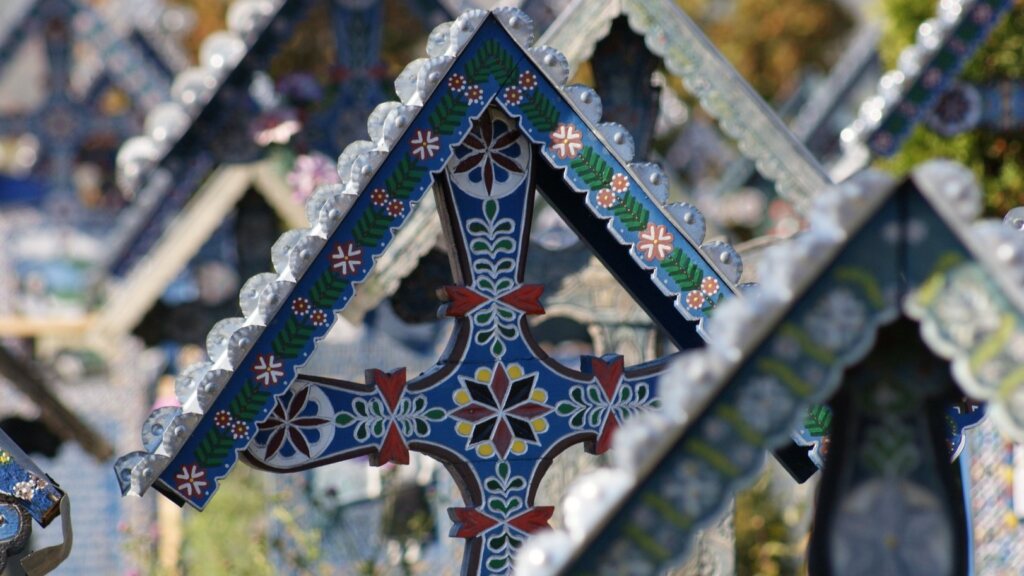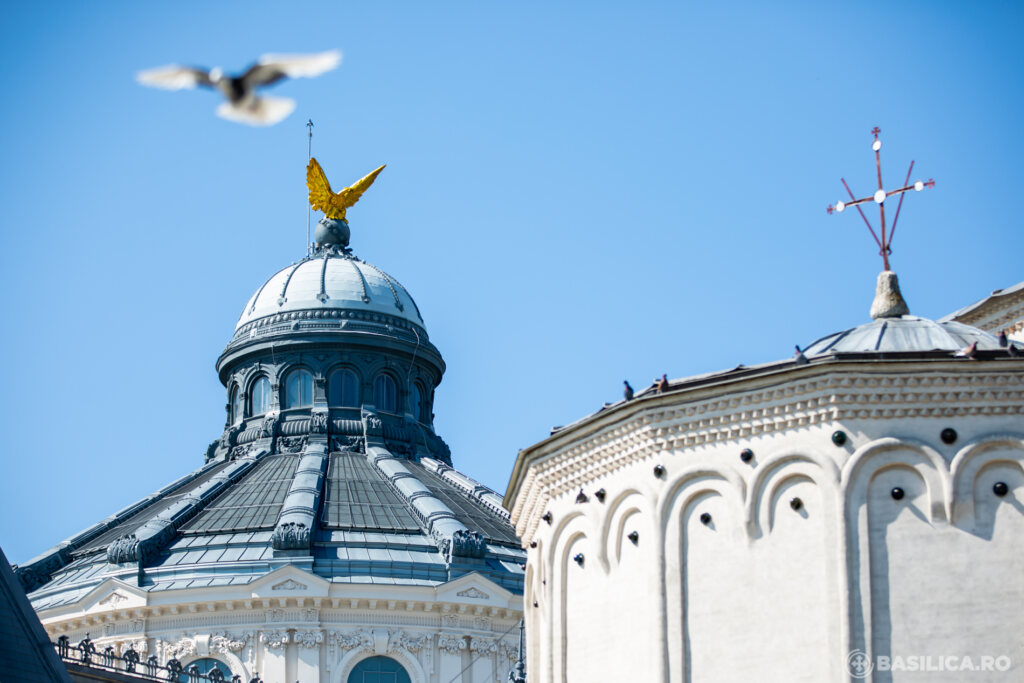Because the Kings of Romania Carol I and Ferdinand I initiated and supported the project of building a new Cathedral in Bucharest, on the National Day of Royalty, 10 May 2016, we present publicly precise and important data regarding the People’s Salvation Cathedral, which is currently in an advanced stage of construction:
GENERAL INFORMATION
Name: PEOPLE’S SALVATION CATHEDRAL[1]
Location: 13 September Ave, nos. 4-60, Sector 5, Bucharest
Importance category: A (buildings of national importance)
Importance class: II
Resistance to fire: I degree in accordance to norm P118/1999
TECHNICAL INFORMATION ON THE LOCATION
Location
The building is situated in Bucharest, Sector 5,13 September Ave, nos. 4-60. According to the General Urban Plan of Bucharest, the site is located in area CA1, central subarea, with average and high elevation buildings under continuous or discontinuous construction.
Urban requirements
Height: total height of 120 m (underground, basement and ground floor) up to the base of the cross on the main dome – the Pantocrator[2].
Final land occupation
Total land area: 110,000 m²
Land Occupation Percentage: 21.20%
Land Use Coefficient: 0.84
Neighbouring buildings and areas
North – Palace of Parliament
South – 13 September Ave.
East – Palace of Parliament
West – Izvor Str.
Description of the site
The Cathedral’s site is on Arsenal Hill, at the intersection of 13 September Ave. with Izvor Str.
The 110,000 m² site is of a roughly rectangular shape; its long side direction is from east to west, parallel to 13 September Ave.
Close to the site, there are several monumental buildings representing important State institutions, namely the Palace of Parliament, the Romanian Academy (Research Institutes) and the Ministry of National Defence, as well as Marriott Hotel and a number of residential buildings located along the 13 September Ave. In this urban context, the future Cathedral can be regarded as a vertical axis or a unifying pole of all these buildings placed in a unitary and representative urban compound.
Reasons for site selection
The municipality recommended the final location on the Arsenal Hill, behind the House of the People (Palace of Parliament), after proposing three other locations, in different stages (Union Square – 1999, Alba-Iulia Square – 2001, and Carol Park – 2004). With no alternative, the Romanian Patriarchate accepted this location in 2005, even though it offers a reduced visibility to the Cathedral, due to the enormous size of the House of the People. Why has the Romanian Patriarchate finally accepted this location? Because it considered that as a moral restoration or “a Resurrection light” for the five “crucified” churches, three of which were demolished (Alba Postăvari, Old Spirea and The Life-giving Spring), and two of them (Sisters Skete and Mihai Vodă Monastery) were relocated by the communist regime in order to build in their places the House of the People.
Other considerations
- The site is located on a hill, following the Christian tradition of building places of worship on hills, in order to call people to spiritual elevation or interior ascent to meet God the Creator and the Saviour of the World (Pantocrator);
- The east-west alignment of the site allows the Cathedral’s Altar to be oriented eastwards, in accordance to traditional liturgical requirements;
- The presence of some important institutions such as the Parliament of Romania, the Ministry of National Defence and the Romanian Academy (Research Institutes) in the same area calls to dialogue and cooperation for the benefit of the Romanian society. In this regard, the patronal feasts of the Cathedral, namely, the Ascension of the Lord, which is also the National Heroes’ Day, and Saint Andrew, the Apostle of Romanians and Protector of Romania, have multiple meanings.
Therefore, the new Cathedral, located on the former Arsenal Hill and close to the Minister of National Defence, is par excellence the Cathedral of the Romanian Heroes of all time, who sacrificed their lives in defence of the Romanian people and for its organization in an independent state – Romania.
FEATURES AND DESCRIPTION OF THE NATIONAL CATHEDRAL
Length = 126.10 m
Width (at the aisles) = 67.70 m
Height = 120.00 m
Total ground built area = 13,668.50 m²
Total unfolded built area = 52,529.20 m²
Total operational area = 36.897,96 m²
The main space at +0.00 m level (narthex and nave) allows to place 1,000 chairs for the persons attending religious services.
The Cathedral building has two main elements: the first one is the visible part of the Cathedral, formed by the upper floors situated above the ±0.00 m level, and the second one is the unseen part, formed by the lower floors situated under the ±0.00 m level.
The building of the Cathedral situated above the ±0.00 m is 126.10 m long, 67.70 m wide and 120.00 m high up to the base of the cross of the main dome. The main liturgical spaces are arranged here in succession, according to the Orthodox liturgical requirements: the main entrance on the western side for access through an arcaded porch, then the exonarthex, the narthex, the nave and the altar on the eastern side. On the northern and southern sides of the nave there are two lateral aisles, while over the nave stands the main dome (Pantocrator). On the western side, over the exonarthex there is a space for the choir, and over the choir’s space stands the belfry-steeple. On the superior levels of the narthex and nave, there are interior lateral galleries (balconies), as well as an interior circuit around the base of the main dome, at the level of +56.00 m, and an exterior circuit around the main dome – Belvedere, at the level of +91.00 m, offering a panoramic view of the city (similar to several other European cathedrals). The vertical circulation will be made on stairs and by 8 elevators which allow access to every inferior and superior levels of the Cathedral, especially for the elderly or people with disabilities.
At the inferior levels of the Cathedral (under the +0.00 m level) there are: a chapel for the daily liturgical monastic program; the Romanian Christianity Museum; spaces for pastoral counselling of pilgrims; a shop for church books and ecclesiastic objects, while on the exterior, there are underground parking spaces.
The Cathedral’s architecture is a synthesis between tradition and contemporaneity, harmonising architectural elements from different areas of Romania (Moldavian niches, Brâncovenesc porches and tall Transylvanian towers), as well as monumental elements from some Western Cathedrals, considering that nowadays a large part of the Romanian diaspora lives in the West.
Regarding the calendar of the works, it should be mentioned that until now 70% of the work volume has been accomplished, while currently works are being carried out between the levels of +27.00 m and +40.00 m (arcades and galleries). The following works are intended for the near future:
- The completion of the works at the main nave and interior galleries up to the level of +45.00 m by December 2016;
- The completion of the works at the secondary towers, at the level of +62.00 m by April 2017;
- The completion of the works at the steeple, at the level of +75.50 m by July 2017;
- The completion of the works at the main dome (Pantocrator) at the level of +106.00 m by December 2017;
- Metal structure and roofing by June 2018;
- Painting of the iconostasis and consecration of the Altar of the new Cathedral on 1 December 2018;
- Painting of the whole Cathedral during the period 2019-2024.
The adjacent buildings (with a much lower height) will be built after the completion of the Cathedral. These buildings will offer spaces for accommodation and food services for pilgrims, for pastoral, cultural, social and medical activities of the Church. Close to the Cathedral a five hectares park will be arranged, which will have many green spaces, some of them specially designated for children.
Why do we need a new Cathedral in Bucharest?
Because the current Patriarchal Cathedral in Bucharest is too small. It was built on the Hill of Vine Growers (Dealul Podgorenilor) in 1658 as a monastery church, and, in 1668, for lack of an alternative, temporarily became a Metropolitan Cathedral. The provisional period lasted until 1925 when the church became, temporarily once more, a Patriarchal Cathedral. Being a very small Cathedral, many faithful participate in the services staying in the outer courtyard of the Cathedral, sometimes standing in the cold, some other times in heat or in the rain.
The need to build a representative Orthodox Cathedral in Bucharest was stated after the Independence War of 1877. Thus, in the summer of 1884, King Carol I promulgated the Law of the Cathedral Church in Bucharest, which has never been repealed ever since, but was implemented only after 126 years, when, on 2 September 2010, the building permit was issued, and on 20 December 2010 the first building works at the new Cathedral begun. The site of the new Cathedral was previously blessed on 29 November 2007, on the eve of the feast of St Andrew the Apostle, Protector of Romania, by His Beatitude Patriarch Daniel, in the presence of the members of the Holy Synod of the Romanian Orthodox Church; yet, for three years (2008-2010), the stages of the designing contest has been organized. Considering that appropriate cathedrals were built in every capital city of predominantly Orthodox countries (Athens – 1862, Sofia – 1912, Moscow – 2000, Belgrade – 2004, Tbilisi – 2004) and that almost every provincial Romanian capital has its cathedral, it was also necessary to build a representative National Cathedral in the capital city of Romania, both for practical liturgical reasons, and also as a symbol of the faith, freedom and dignity of the Romanian people. One should note that King Ferdinand reaffirmed this endeavour on 10 May 1920, shortly after the Great Unification of 1918, the centenary of which we shall celebrate in 2018.
We entreat God that, by His help and the generosity of the big-hearted, the new Cathedral become in 2018 not only a gift for the centenary, but also a gift for eternity, that is for Jesus Christ, Who is the same yesterday, and today and forever (Hebrews 13:8).
We thank all those who, in word and deed, have supported and will support the construction of the Cathedral, considering it at the same time a practical liturgical necessity and a symbol of Romanian spirituality and dignity.
Department for Church Monuments and Buildings of the Romanian Patriarchate
[1] Salvation here must be understood as deliverance or liberation, because after the year 1918 the word salvation had the meaning of liberation of Romanians from foreign rule. The Standing Church National Council has recently (11 February 2016) equated the name of the People’s Salvation Cathedral with the NATIONAL CATHEDRAL, similar to the new Cathedral in Washington D.C., 1990 (length – 157,5 m, width – 88 m, height – 91,7 m), partially financed also with the support of the US Government.
[2] The height of the main dome (120 m) is related to the length of the Cathedral (126.10 m.) in order to suggest the form of a big ship with a cross-form mast, according to the Apostolic Constitutions, Book 2, chapter 57, but especially to express from an architectural point of view the truth that Christ, the One Who ascended to heaven – the Pantocrator – is the same One with the Crucified and Risen Christ. Another source of inspiration is the Orthodox Cathedral in Timişoara: 63 m long and 90 m high (at the main dome).






